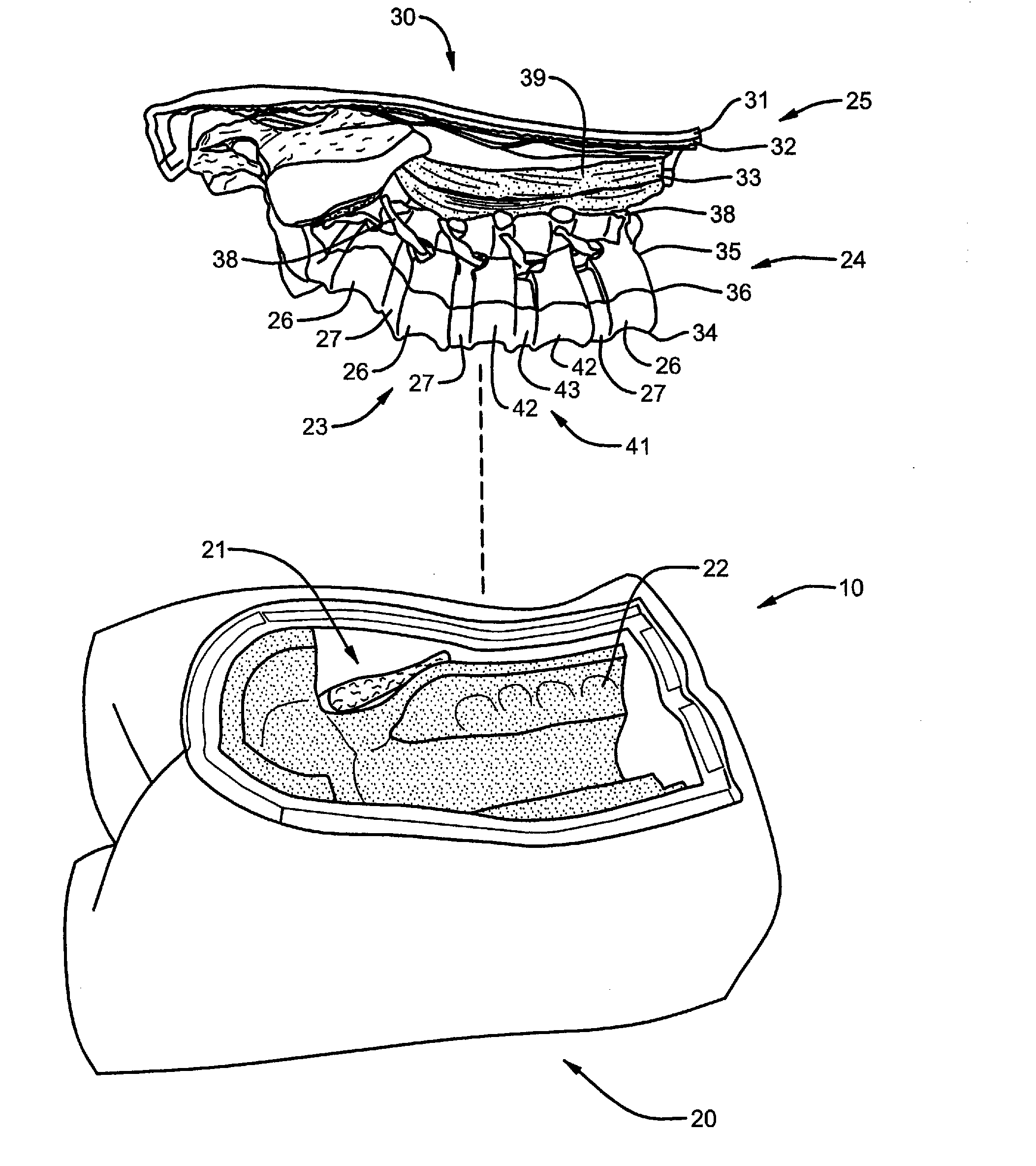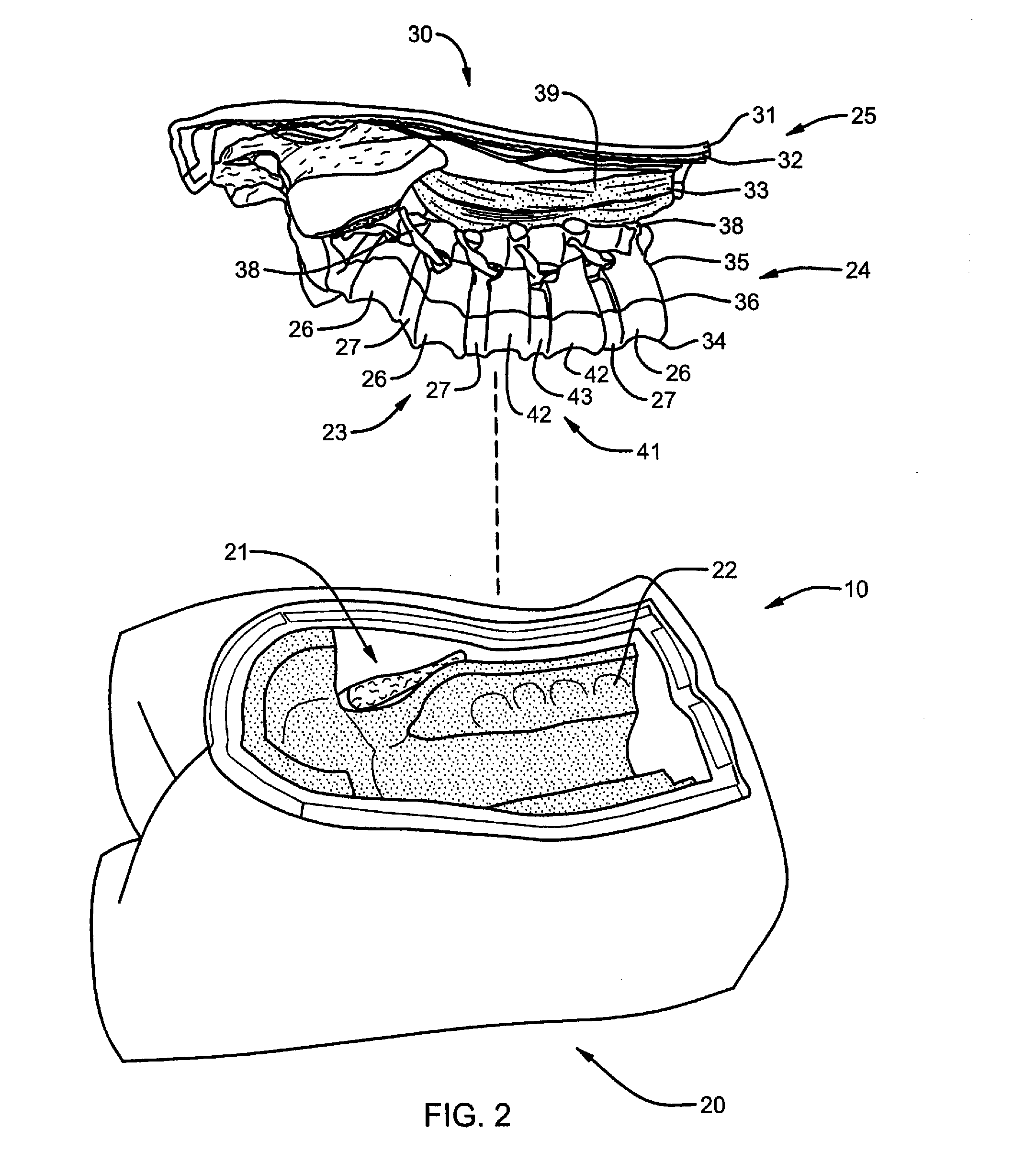Surgical training model and method for use in facilitating training of a surgical procedure
a surgical and training model technology, applied in the field of medical practitioner training aids, can solve the problems of low demand for medical practitioners to utilize this tool for training purposes, lack of realistic anatomic features and soft tissue characteristics, and high cost of disposal of used human specimens, so as to reduce the cost of utilization of training models and increase flexibility to provide different artificial in vivo surgical conditions.
- Summary
- Abstract
- Description
- Claims
- Application Information
AI Technical Summary
Benefits of technology
Problems solved by technology
Method used
Image
Examples
Embodiment Construction
[0032]Referring to FIGS. 1 & 2, one embodiment of a surgical training model 10 (see FIG. 2) is shown, in accordance with an aspect of the present invention. As shown in FIG. 2, model 10 includes a holder member 20 and an insert member 30. Holder member 20 includes a receptacle portion 21 configured to receive insert member 30. The shape of insert member 30 partially mates with at least one inner surface 22 of receptacle portion 21 when insert member 30 is placed within receptacle portion 21. Following assembly of insert member 30 into receptacle portion 21, the exterior appearance of holder member 20 closely approximates the posterior aspect of a lower torso of a human body. Insert member 30 is usually held in place within receptacle portion 21 by material friction, although it should be understood to those skilled in the art that other securement mechanisms are contemplated including, but not limited to velcro, removable adhesives and mechanical means. As seen in FIG. 1, the concav...
PUM
 Login to View More
Login to View More Abstract
Description
Claims
Application Information
 Login to View More
Login to View More - R&D
- Intellectual Property
- Life Sciences
- Materials
- Tech Scout
- Unparalleled Data Quality
- Higher Quality Content
- 60% Fewer Hallucinations
Browse by: Latest US Patents, China's latest patents, Technical Efficacy Thesaurus, Application Domain, Technology Topic, Popular Technical Reports.
© 2025 PatSnap. All rights reserved.Legal|Privacy policy|Modern Slavery Act Transparency Statement|Sitemap|About US| Contact US: help@patsnap.com



